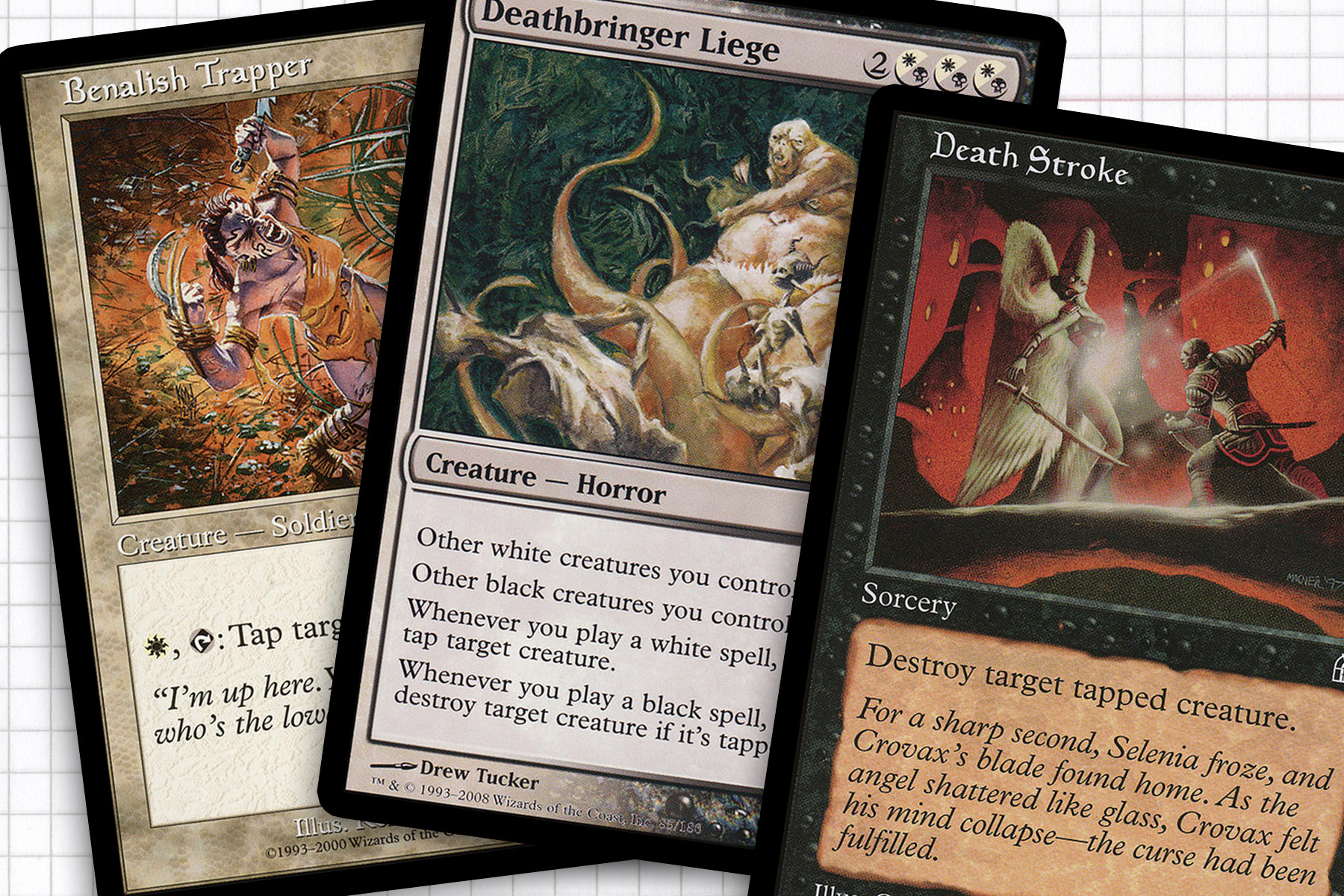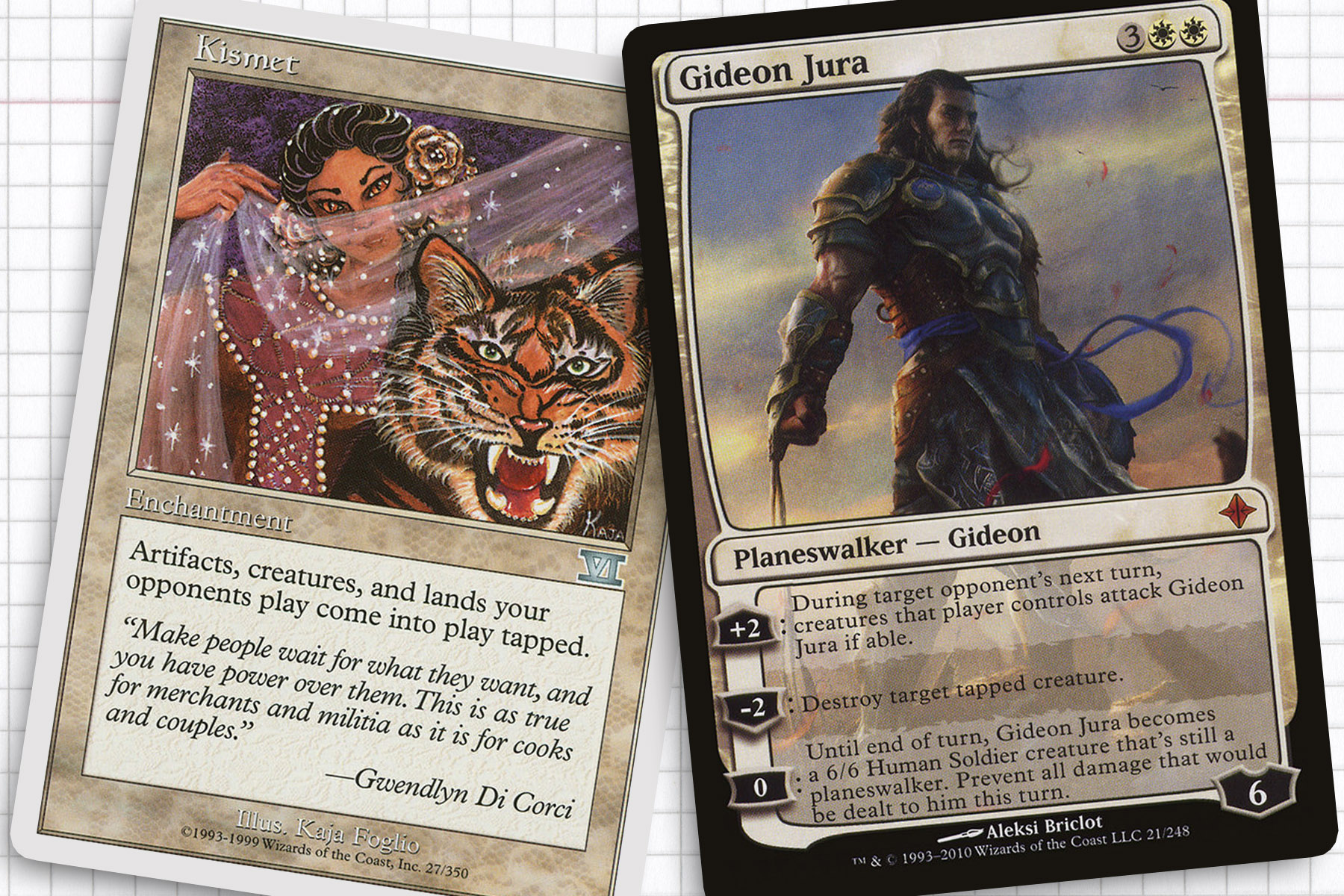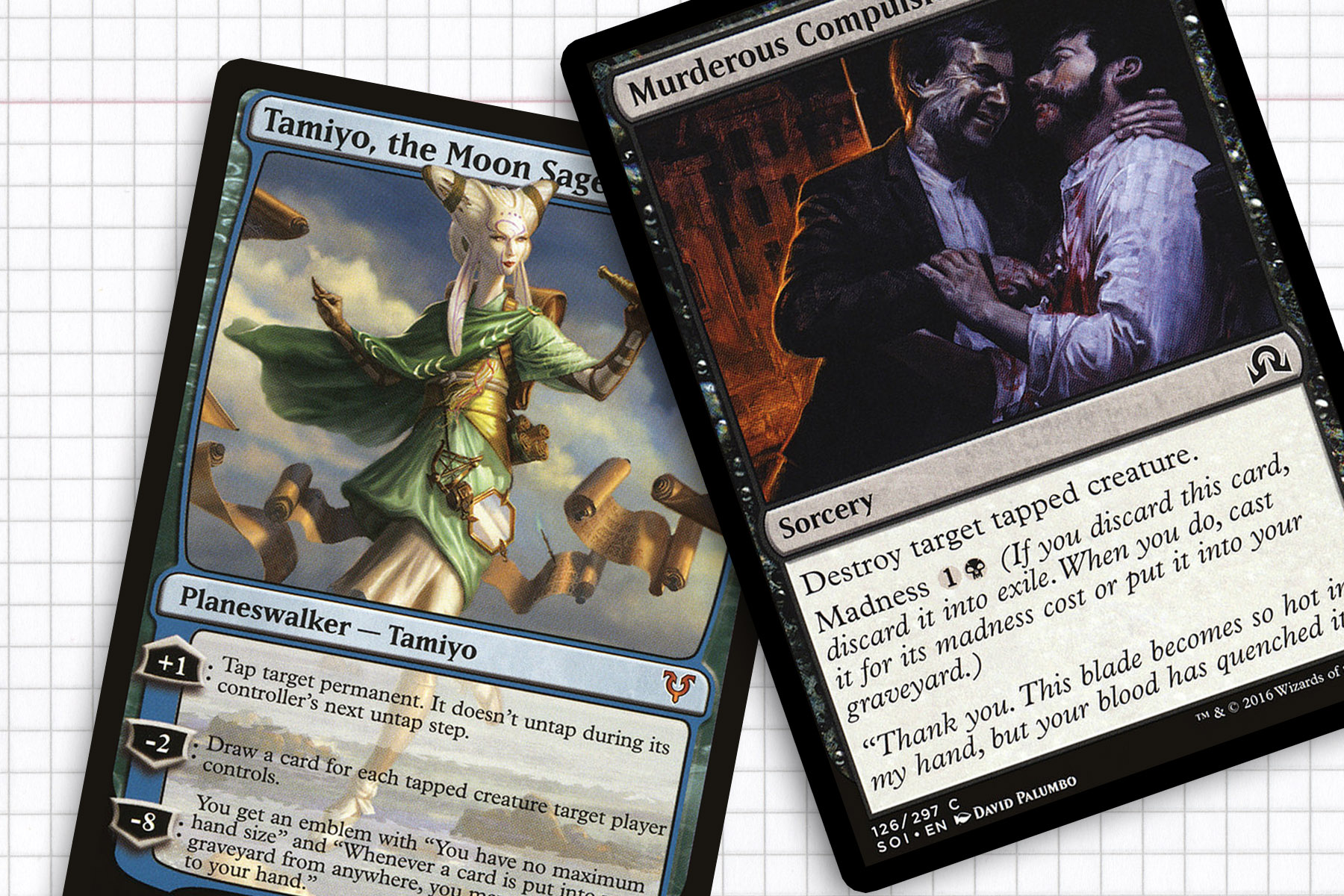Dear Magic Design Team,
Thank you for Take Vengeance. As I am writing this, we are more than a hundred cards into the Core 2019 previews. I am very excited about some of the reprints, the new Elder Dragons—especially a new Nicol Bolas card that transforms into a planeswalker—and the new twists on established cards like Mirror Image or Exclusion Mage. But most of all, I love Take Vengeance. And I know that loving a common, strictly worse than Swift Reckoning, and a less-than-optimal removal spell over all the other cards we have been shown in the last week may seem irrational. But I have been playing this game for more than half my life, I am playing the long game towards building my masterpiece deck.
The year was 2005 and I was obsessed with duality and my angels and vampires deck. I fell in love with Benalish Trapper as a way of removing troublesome blockers, and by happenstance leveled up some of my play skills. But it wouldn’t be until Planar Chaos when Assassinate was previewed that I could begin to see the shape of a deck. While the game that had cards in the past that destroyed tapped creatures, I had never been aware of them and this card opened me up to the existence of those cards. Even after I had my two year break from the game around Lorwyn, when I heard about Deathbringer Liege, I instantly acquired four copies because I finally saw an archetype in stunning clarity and I wanted to build a deck that destroyed tapped creatures.
I was overjoyed when later when you printed Gideon Jura, a planeswalker that literally did what I wanted to do with one ability, while forcing the issue with another. At some point I stopped playing sixty card casual decks, but I have harbored the motivation to build this deck in Commander, getting a little closer every year as destroying tapped creatures gets one or two spells sprinkled into a block. I am to the point where I need to celebrate every time I get a victory and last week—for this niche deck—I had a small victory and I thank you for it.
Ryan Sainio
P.S. Now just print more things like Deathbringer Liege, maybe as an Esper Legendary Creature.

Always a Johnny
So it’s possible that my letter was without enough context.
As I look back, I think I have always been a Johnny, from my early beginnings in Magic I have always derived some pleasure from expressing myself through my deck choices. The subject of today is the deck I’ve always wanted to be most known for, taking far more happiness and joy from people recognizing it than my admiration for the Eldrazi or Doran, the Siege Tower has ever earned me. And as my letter insinuated, it all started in 2005, when I fell in love with the Black/White color pair.
At the time I would play games with a neighbor across the street and I was super excited when I finally collected my playsets of Serra Angel and Sengir Vampire to build my Angelic Vampires deck, which mostly consisted of the two creatures, some Holy Strength and Unholy Strength, and White Knight and Black Knight. As I said, duality was key.
The deck would get some support as Guildpact brought Orzhov to the main stage, but honestly the actual themes of the guild never spoke to me, I wasn’t much of a control player and while I really wanted to make Haunt work, it never fit into the overall sense I was trying to capture. That would change the next year with Planar Chaos giving me both Assassinate and Rathi Trapper—two references I got, even though I had a loose knowledge of Magic’s card pool. From there I had a theme, what if I built a deck that caused my opponents to not want to tap their creatures, buying my turns my simply having all “rattlesnakes.” I discovered Death Stroke and Master Decoy through Gatherer and with the resources of a mid-2000’s twenty year old, I started trying to complete my vision.

I’d Tap That
My post-college years and multiplayer Magic were very strongly linked. I played a lot of Magic just about every weekend and later when I moved out of my parents house, most Thursdays. In that time certain people within my friends got synonymous in my mind with certain decks, I knew Louis—a super casual player when I met him and later the most polished competitive player of the group—first for his Ire of Kaminari deck and later tribes like Goblins; Jesse—who had been very Standard-minded before I met him—was known for a rotating gauntlet of Affinity, Burn, and his love for Dragons; and Grayson was known for—probably always will be—these out-of-the-box brews that I am at a loss to try to classify. And in the middle of all of that from 2009 to 2014, I was taking in the pieces to form this strange mismash of a deck I would often jokingly call “I’d Tap That,” sifting through Gatherer hundreds of times, testing out every No Mercy, Lightmine Field, and Kismet variants I could concoct in search of the perfect balance.
I'd Tap That
| Creatures (14) 3 Benalish Tapper 3 Rathi Tapper 2 Imposing Sovereign 1 Sunblast Angel 2 Kor Hookmaster 2 Royal Assassin 1 Deathbringer Liege Spells (27) 4 Death Stroke 3 Demonic Tutor 2 Wrath of God 2 Damnation 2 Glimpse the Sun God 2 Angelsong 2 Assassinate 2 Darkness 2 Blinding Beam 3 Blind Obedience 1 Hissing Miasma 2 Gideon Jura | Lands (21) 3 Temple of Silence 3 Isolated Chapel 3 Fetid Heath 6 Plains 6 Swamp |
Silly as it might be now, the core strategy of the deck was have the threat of something like a Royal Assassin on the table or a Death Stroke waiting in hand. Because Jesse’s Burn deck picked up most of its steam through cards like Flame Rift and Ball Lightning, this deck was able to sit in a place where my creatures avoid removal from his burn and were able to blank his entire attack step with a Kismet-effect on the table. This deck made me a better player, teaching me the importance of leaving mana open for a Darkness to blank an attack step or to tap down a creature. And before this deck, I didn’t understand the need for dual lands or redundant effects like Blind Obedience coupled with Imposing Sovereign.
The addition of Gideon Jura relatively early on in the development of this deck gave it a lot of legitimacy in my eyes, acting as one of the four cards in the deck meant to close out a game. In many ways, I wish Gideon had kept more of this feel over the course of the last eight years, though plenty of Melvins will probably argue he’s remained relatively the same. Glimpse the Sun God was a late addition to the deck, but also a mile marker that tells me that this deck was last updated in 2014, which makes sense as my ventures into casual sixty card Magic came to a huge halt that year.

What’s Next?
This is the one deck I feel the most connection with, one of two decks I have yet to dismantle and probably the deck that caused me to have the most reflective moments about how I saw the game. With this deck having gone physically untouched for over four years and a few thousand new cards to consider, the next logical step is making it into a Commander deck, a feat which I have tried and vaguely succeeded at with a Dakkon Blackblade hybrid of the deck with planeswalkers to fill out deck slots. While I did enjoy how that deck played, it lacked the soul of the deck as it worked in my post-college playgroup, possibly as a meta issue or just a lack of a consistency that I had tuned to the deck to. I have explored Bant and even five color to try to recapture this deck, but at this time I’m just not sure if the right amount of cards exist.
It’s easy to tap creatures and benefit off them being tapped with cards like Thousand Winds or Borrowing 100,000 Arrows, but the urge to make it more controlling always starts to dilute the deck. The point was never to tap creatures maliciously, but to present legitimate on-board answers to dissuade threats from coming my way. I’m probably being too puritanical about the operation of the deck; but I promise you that once I find an answer, I will make it a point to let you know. Unlike most decks I write about, proposing a hypothetical deck that might run the paces at a table, I will likely not write about this topic until I have played it and am really happy with the results.
The previewing of Take Vengeance gives me a rush I often feel about every 12 to 18 months, a smaller piece of a bigger puzzle. While a deck can and has existed in this archetype for me, I am presently at the mercy of Wizards to keep the options flowing. The lines are often blurred on whether this is at its core a Orzhov, Azorius, or Esper strategy and I understand that current design philosophy is unlikely to give us another Master Decoy; but I can keep dreaming. Maybe I can win the Great Designer Search 4 and just do it myself.

